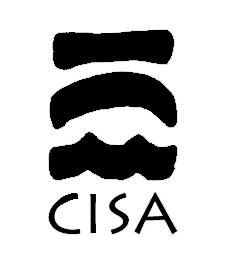IMPACT OF MUNICIPAL HOUSEHOLD PAY-AS-YOU-THROW ON CONSUMER FOOD WASTE BEHAVIORS AND ATTITUDES IN JAPAN
- Maki Nonomura - Department of Food Environment Economics, Tokyo University of Agriculture, Japan
- Hajime Yamakawa - Division of Environmental Sciences,, Kyoto Prefectural University, Japan
- Tomoko Okayama - Department of Regional Development, Taisho University, Japan
- Kohei Watanabe - Department of Sociology, Teikyo University, Japan
- Yasuko Seta - Division of Environmental Sciences, Kyoto Prefectural University, Japan
- Available online in Detritus - Volume 31 - June 2025
- Pages 17-28
Released under CC BY-NC-ND
Copyright: © 2025 CISA Publisher
Abstract
In Japan, half of the avoidable food waste is generated at home, and municipal household pay-as-you-throw (PAYT) policies are expected to reduce it. However, few studies have examined how PAYT influences household food waste, specifically the types of food waste-related behaviors and attitudes affected, the number of people influenced, and those impacted by PAYT. This study uses a questionnaire survey to examine these aspects by targeting residents of cities implementing PAYT. The results revealed that 13–21% of residents perceived a significant influence of PAYT and showed a lower frequency of waste of homemade meals and plate leftovers. They showed a higher frequency of food waste reduction behaviors, such as storing vegetables properly and prioritizing the consumption of near-expiry food. The perceived effect of PAYT was slightly greater for individuals who prefer to consume homemade meals. The results indicated that the overall impact of PAYT was limited and that additional interventions were required. Efforts should target behaviors that were not sufficiently promoted by PAYT, such as checking stock before shopping and planning purchases and meals carefully, as well as developing strategies that reach individuals with low homemade meal orientation. As the study uses self-reported data, findings should be interpreted cautiously. Behavioral changes should be further examined through pre- and post-PAYT longitudinal studies.Keywords
Editorial History
- Received: 07 Feb 2025
- Revised: 28 Apr 2025
- Accepted: 21 May 2025
- Available online: 30 Jun 2025
References
Aschemann-Witzel, J., de Hooge, I., Amani, P., Bech-Larsen, T., & Oostindjer, M. (2015). Consumer-related food waste: Causes and potential for action. Sustainability, 7(6), 6457–6477.
DOI 10.3390/su7066457
Cardew, T. (2019). Impact of household food waste collections on household food waste arisings. WRAP
Chalak, A., Abou-Daher, C., Chaaban, J., & Abiad, M. G. (2016). The global economic and regulatory determinants of household food waste generation: A cross-country analysis. Waste Management, 48, 418–422.
DOI 10.1016/j.wasman.2015.11.040
Cohen, J. (1988). Statistical power analysis for the behavioral sciences (2nd ed.). Lawrence Erlbaum
Jörissen, J., Priefe, C., & Bräutigam, K. R. (2015). Food Waste Generation at Household Level: Results of a Survey among Employees of Two European Research Centers in Italy and Germany. Sustainability, 7(3), 2695-2715.
DOI 10.3390/su7032695
Koivupuro, H. K., Hartikainen, H., Silvennoinen, K., Katajajuuri, J. M., Heikintalo, N., Reinikainen, A., & Jalkanen, L. (2012). Influence of socio-demographical, behavioural and attitudinal factors on the amount of avoidable food waste generated in Finnish households. International Journal of Consumer Studies, 36(2), 183–191.
DOI 10.1111/j.1470-6431.2011.01080.x
MoE (2024). The 2022 Japan municipal waste database: Overall results
Mallinson, L., Russell, J., & Barker, M. (2016). Attitudes and behaviour towards convenience food and food waste in the United Kingdom. Appetite, 103, 17–28.
DOI 10.1016/j.appet.2016.03.017
Morgan, S., Roberts, M., Miller, M., Voxlin, D., Kaur, K., Reiss, H., & Moyseevich, J. (2024). Opportunities for prevention with household food waste collections: Exploring habits around food waste, relationships with food caddies, and ideas to boost prevention efforts. WRAP
Nakamura, O., & Wada, M. (2003). Recycling status of raw household garbage in local governments: From the perspective of social technology. Environmental Studies. Nagasaki University, 6(1), 17–30
National Network Council Against Food Loss and Waste (2021). A database of food waste reduction policies
Nonomura, M. (2018). What types of consumer behaviors produce the most household food waste? —A literature review—. Journal of the Japan Society of Material Cycles and Waste Management, 29, 152–163.
DOI 10.3985/jjsmcwm.29.152
Norman, G. (2010). Likert scales, levels of measurement and the “laws” of statistics. Advances in Health Sciences Education, 15(5), 625–632.
DOI 10.1007/s10459-010-9222-y
Reynolds, C., Goucher, L., Quested, T., Bromley, S., Gillick, S., Wells, V. K., Evans, D., Koh, L., Carlsson Kanyama, A., Katzeff, C., Svenfelt, Å., & Jackson, P. (2019). Review: Consumption-stage food waste reduction interventions – What works and how to design better interventions. Food Policy, 83, 7–27.
DOI 10.1016/j.foodpol.2019.01.009
Schanes, K., Dobernig, K., & Gözet, B. (2018). Food waste matters – A systematic review of household food waste practices and their policy implications. Journal of Cleaner Production, 182, 978–991.
DOI 10.1016/j.jclepro.2018.02.030
Stancu, V., Haugaard, P., & Lähteenmäki, L. (2016). Determinants of consumer food waste behaviour: Two routes to food waste. Appetite, 96, 7–17.
DOI 10.1016/j.appet.2015.08.025
Stefan, V., van Herpen, E., Tudoran, A., & Lähteenmäki, L. (2013). Avoiding food waste by Romanian consumers: The importance of planning and shopping routines. Food Quality and Preference, 28(1), 375–381.
DOI 10.1016/j.foodqual.2012.11.001
Stöckli, S., Niklaus, E., & Dorn, M. (2018). Call for testing interventions to prevent consumer food waste. Resources, Conservation and Recycling, 136, 445–462.
DOI 10.1016/j.resconrec.2018.03.029
van der Werf, P., Gilliland, J. A., & Seabrook, J. A. (2020). How neighbourhood food environments and a pay-as-you-throw (PAYT) waste program impact household food waste disposal in the city of Toronto. Sustainability, 12(9), 2908.
DOI 10.3390/su12177016
Ventour, L. (2008). The food we waste. WRAP
Vittuari, M., Garcia Herrero, L., Masotti, M., Iori, E., Caldeira, C., Qian, Z., Bruns, H., van Herpen, E., Obersteiner, G., Kaptan, G., Liu, G., Mikkelsen, B. E., Swannell, R., Kasza, G., Nohlen, H., & Sala, S. (2023). How to reduce consumer food waste at household level: A literature review on drivers and levers for behavioural change. Sustainable Production and Consumption, 28, 1–14.
DOI 10.1016/j.spc.2023.03.023
Wheeler, S., Xu, Y., & Gregg, D. (2025). Exploring South Australian households’ perceptions towards various food waste policies. Ecological Economics, 227, 108431.
DOI 10.1016/j.ecolecon.2024.108431
Williams, H., Wikström, F., Otterbring, T., Löfgren, M., & Gustafsson, A. (2012). Reasons for household food waste with special attention to packaging. Journal of Cleaner Production, 24, 141–148.
DOI 10.1016/j.jclepro.2011.11.044
Wunder, S., van Herpen, E., McFarland, K., Ritter, A., van Geffen, L., Stenmarck, Å., & Parfitt, J. J. (2019). Policies against consumer food waste: Policy options for behavior change including public campaigns. REFRESH
Yorimoto, K., Iwasaki, K., Morohashi, H., & Wada, H. (1998). Changes in the amount and composition of waste in Yono City before and after the introduction of a PAYT system. Proceedings of the Annual Conference of the Japan Society of Waste Management Experts, 9(1), 153–155




